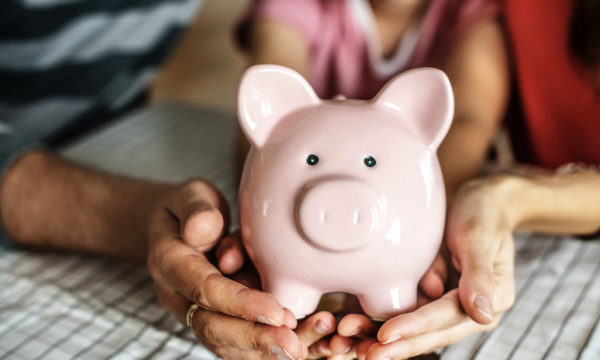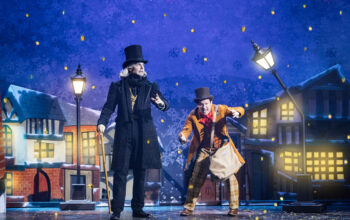Navigating modern romance: The evolution of dating in the digital era

Dating has changed a lot over the last few decades, largely due to the emergence of online dating. For a lot of people, this can feel like an overly radical shift. However, it is important to remember that dating has always been an amorphous concept. For example, many today see modern marriages, diamond rings, and white wedding dresses as a tradition that “has always been around.” In reality, however, these really only became the norm at the start of the 20th century, as prior to that, arranged marriages were more prevalent.
So, the evolution of dating is something normal and is to be expected. Yet, it’s also something to be examined and understood properly, if we want to have a better time dating other people. To that end, let’s look into the evolution of dating in the digital era.
Why is traditional dating fading in the digital era?
People often blame online dating for the decreased interest in in-person dating among millennials and Gen-Z. While the presence of dating apps is definitely a major contributing factor, we are likely doing ourselves a disservice if we only focus on that.
Instead, as with any other situation or phenomenon, there are numerous significant factors for the decline of in-person dating:
- The rapid decline of “Third spaces” is a huge reason why people have started to gravitate toward dating apps and toward social media in general. For many people, there just aren’t enough opportunities for in-person activities, let alone dating. This is an especially big problem in the suburbs where there often aren’t any Third spaces within walking distance at all – most of the suburbs are just houses and streets.
- Home office jobs greatly reduce people’s opportunities to meet new people. This isn’t necessarily to say that home office work doesn’t have its benefits or isn’t worth it, but reduced socialisation is a factor.
- People’s social circles and extended families aren’t as close as they used to be. Not too long ago, people used to live in more close-knit societies. This too had its Pros and Cons, but one of its consequences was that most relationships started between in-person friends, friends of friends, and friends of relatives.
- Another factor is the rise of social media. While sites such as Facebook, Instagram, or TikTok aren’t counted toward the statistics for dating app relationships, a lot of people today meet online on social media or in other places that aren’t dating apps. So, even though dating apps aren’t used by more than 50% of people yet, as we’ll see below, other online spaces also chip away at the number of people who meet in person.
Is online dating really that prevalent?
According to the Pew Research Center, only about 30% of US adults say they have used dating apps. The majority of them are young people, however, with the percentage being 48% for women and men between 18 and 29 years old.
In other words, close to half of young people use online dating apps, and that trend seems set to continue. So, while online dating isn’t exactly “the king of the hill” yet, it is definitely getting there.
Benefits and drawbacks of people’s over reliance on online dating
Like everything else in life, online dating has its Pros and Cons as well. Even if some people demonise it and others swear by it, online dating is no different from other dating methods in that it has its advantages and disadvantages.
Benefits
- Online dating opens access to a much larger dating pool than traditional in-person settings like bars or hobby clubs. A broader pool increases the chances of meeting someone who is genuinely compatible.
- Dating apps also go beyond random connections by matching individuals based on shared interests and stated preferences such as age, location, and lifestyle. While not every match will lead to a lasting connection, this level of personalisation improves the likelihood of finding someone suitable without spending time on incompatible encounters.
- Although chatting online is less personal than face-to-face interaction, it allows for an initial understanding of another person before meeting in real life. This makes it easier to identify red flags or potential incompatibilities early on.
- International dating has likewise become more accessible and popular through online platforms. These tools provide more control and agency, particularly for women, allowing safer and more selective dating experiences.
Drawbacks
- Probably the most often cited drawback of online dating apps is that they make the dating sphere as a whole less personal. This isn’t necessarily true for individual dates, of course, as two people who meet on a dating app can make their dating experience as personal as they want. However, the more people use dating apps, the harder it becomes to meet people interested in dating in person.
- According to statistics, about 50% of people in the US consider online dating apps to be “safe.” This is the positive way to phrase that statistic, however, as it also means that every other person sees such apps as inherently unsafe. This isn’t a great vote of confidence, and for online dating to become more common, such safety concerns will likely need to be addressed.
- The safety issues above are especially common for women, with over 90% of them reporting they have been sent unsolicited sexually explicit images and messages and over 70% saying men have kept contacting them after being told “No.” A further 58% of women report they have been called offensive slurs, and 15% say they have been threatened with physical violence.
What might the future hold?
It doesn’t seem like online dating is going anywhere. Instead, it has gone international, with more and more international online apps and websites popping up every year. The recent emergence of AI is expected to be used heavily by dating app algorithms too, however, exact and credible statistics about its effectiveness are yet to be examined.
VR dating is another curious prospect, although it doesn’t seem likely to ever become something more than a niche fad, as the majority of people will always look for a physical connection, as that’s an intrinsic part of dating and relationships.
Another thing to note is that traditional in-person dating likely isn’t “doomed” and never will be. As popular as dating apps and websites are, people will still meet and socialise face-to-face, be it at school, work, or social events. That may happen less in the future, but it will keep happening regardless.
So, while the dating scene has certainly evolved a lot in the digital era and is bound to keep changing and developing, it’s unlikely that particular forms of dating will ever “fully disappear.”
The editorial unit

























Facebook
Twitter
Instagram
YouTube
RSS